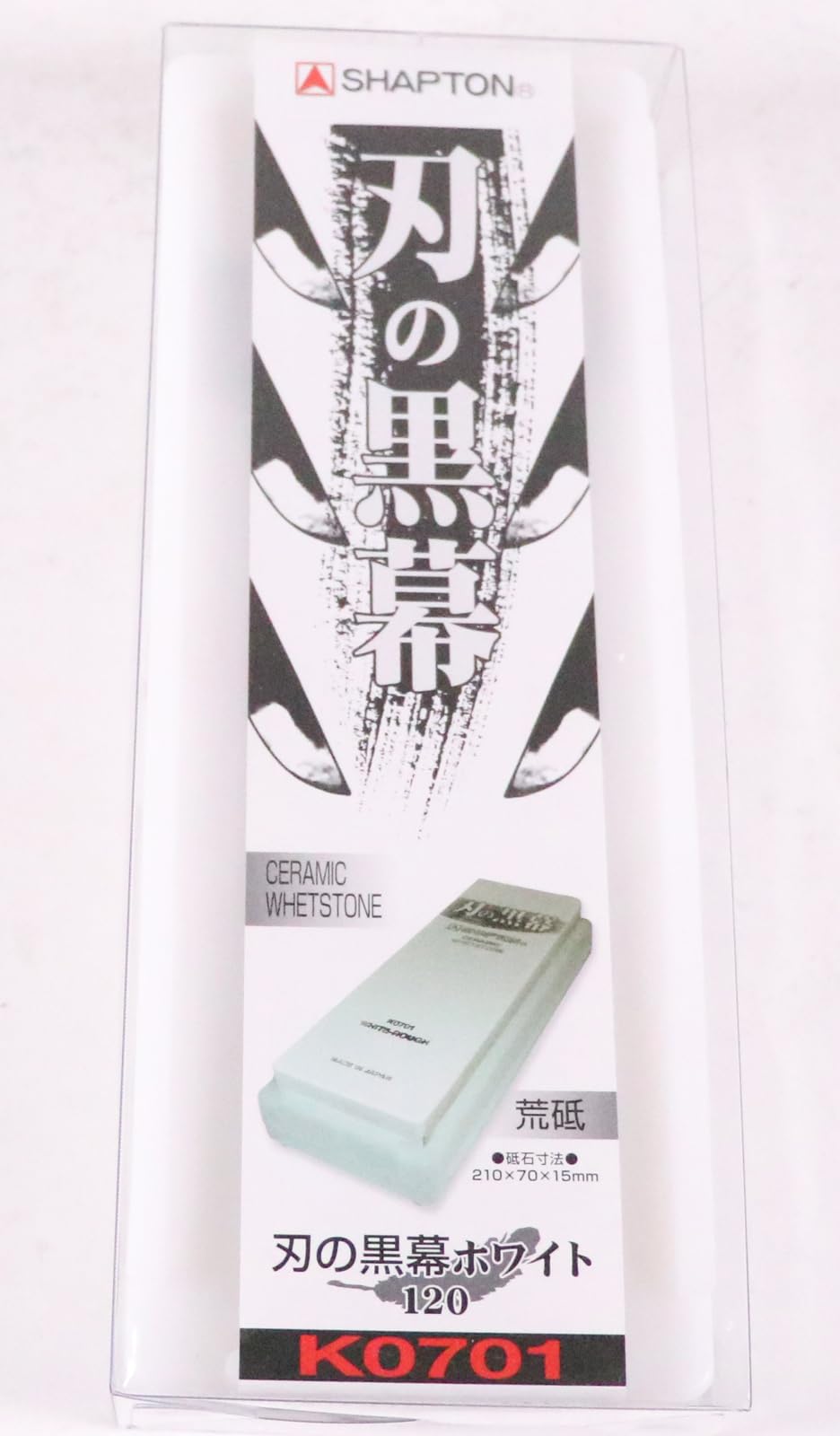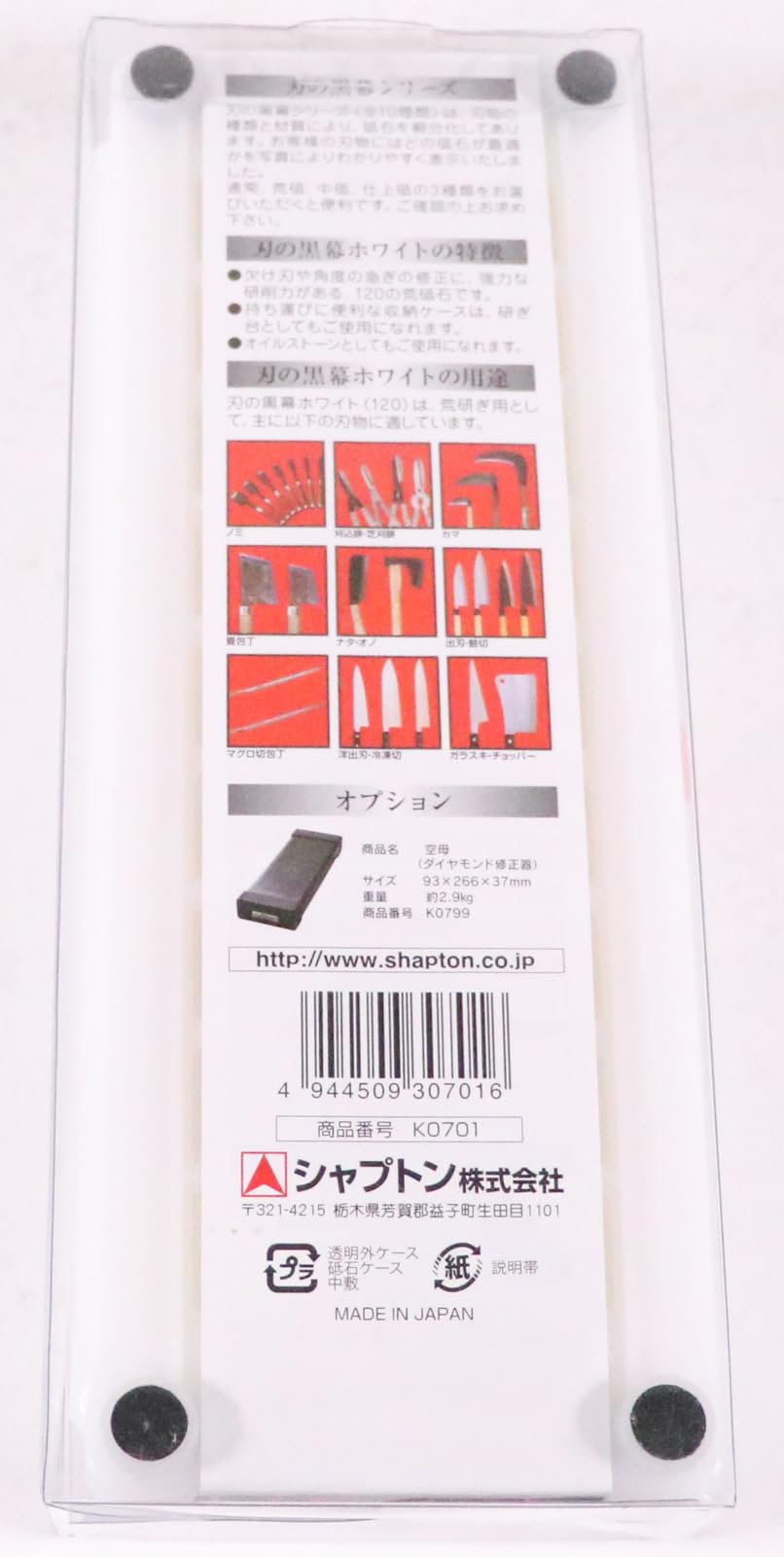





⚡ Sharpen smarter, not harder — own the edge that commands respect.
The Shaptonstone Traditional Homogeneous Waterstone White #120 is a premium ceramic whetstone designed for rapid blade correction and chip repair. Measuring 8.3 x 2.8 x 0.6 inches and weighing 500g, its aggressive #120 grit surface delivers powerful grinding performance, making it ideal for professionals seeking precision and durability in their sharpening tools.
| Brand | Shapton |
| Model Number | 3-0222-0101 |
| Colour | White |
| Product Dimensions | 21 x 7 x 1.5 cm; 500 g |
| Material | Ceramic |
| Item Weight | 500 g |
S**S
An excellent medium-fine water stone, this and one or two strops are all you need for a good edge.
As others have observed, the grading of 1000 is probably a little high, it might be more like 800, it's definitely a medium stone rather than a fine one. Whilst you can use it to reprofile an edge, it will take a while, this stone excels at repairing and maintaing an already profiled knife.It's a very high quality stone, its consitency is uniform, there are no grit lumps (giving rise to pimples) and the wear in consistent over the whole surface. It is of one grade throughout, both sides cut the same.It's easy to use, do fully read the enclosed instructions though since some online videos are incorrect, it's not just a "splash and go" stone, it's porous throughout and requires an initial soaking period especially if it has been left to dry out. You also need to regularly splash as you sharpen to both lubricate and remove slurry. It's not as convenient as a dry diamond stone but it's a fraction of the price. In practice using it with a small towel around it is fine, once it has been soaked you only need a teaspoon of water every so often to keep the surface lubricated and clean.The case is nicely designed as well, it is sturdy and clicks closed positively so that even if you do the unspeakable and drop the stone in the closed box it should still be protected from fracture. There are four non-slip rubber button feet on the underside and a four-sided fence on the lid which retains the stone perfectly whilst allowing water and slurry to drain from the gaps in each corner. This means you don't need to buy or make a custom stone holder, the case does a perfectly adequate job for most people.The whetstone has a very nice smooth grind feel when sharpening, you can easily gauge from the drag how much metal you are removing, the tactile feedback from the stone is excellent.Unlike diamond stones this stone will wear and depending on your usage and technique/proficiency you will need to periodically flatten it which requires investing in a separate flattening stone, but it's well worth it and if you use and maintain this whetstone properly it will give you many years of faultless service and hundreds of sharp knives.Whilst you can buy a finer grade stone to finish on, you don't have to. The orange Kuromaku is a good enough compromise that you can use it to both shapen and finish needing only one or two leather strops with diamond paste to raise a knife to a razor edge (dependent on the knife of course).Overall this is an excellent quality stone, I'm very pleased with it and I also believe that it represents excellent value for money since you can just about get away with just the one expensive whetstone plus one flattening stone and a few rawhide strops. (You can do major reprofiling using those cheap diamond stones first.)As a novice I watched many online tutorials before purchase and I went with the consensus of opinion that this was an excellent value one-stone sharpening solution and after using it successfully (I sharpen all my friend's knives for practice) I concur with them all. If I buy an additional whetstone it will be probably be another Shapton.
E**N
Great if you really need something this coarse
It's quite coarse and removes steel very well. If you are certain that this grit is right for your needs, it makes an excellent addition to your sharpening collection. It's really for damaged edges. For blade thinning and overly dull edges, the 320 grit is probably more versatile. You don't really need both, but if you find yourself repairing a lot of knives, this 220 is an efficient place to start.
R**Y
Great coarse stone
Works well. Takes down metal quickly and effortlessly, ready for the next stage. Definitely a must if you need to reprofile, thin, or correct chips etc. Or just to get a fast edge on an especially blunt knife.For a rough grit, this doesn't seem very soft, which I like. This stone should last a long time. I had an old 220G wet stone, it needed flattening after every use, didn't last long at all. Not the case here.My two cents on sharpening grits; I feel like new sharpeners are scared of coarse grits because they don't want to damage anything, so they tend to start at too fine a grit. It's important to remember the amount of material you remove to get from blunt to sharp is the same regardless of grit. The difference is how many strokes it takes you.It's not a small difference either, if you start with a blunt knife (butter knife) with a 220, 400, 1000, 3000. You could get a mirror polished, hair popping edge in about fifteen minutes, if you started with 1000 or 3000 you could genuinely be there for hours and not achieve what you want. And you would have used up a lot of expensive stone.You can get a shaving sharp edge with (skill) this stone and a strop. The finer grits get you a nice polished egde. Although I think it's generally accepted that 1000G is ideal for dressing a "not too blunt" knife.
S**D
Great stone
Got to be the best whetstone I've bought so far (and I've bought a few). Gets my straight razor amazingly sharp very quickly. Would definitely recommend
L**A
Knife sharpener very good quality
It is very good sharpener ,very good quality
P**T
Kuromaku -- one stone and done? It'll work, but plan on buying a 320 as well.
I started my whetstone journey with the King 1000/6000 and it was a real struggle. Recently though, I moved over to Shapton. I've got a Kuromaku 320 and the 1000. Writing here about the 1000. So, what do I think about it?If your knife is blunt, you probably want to start on a courser grit like the 320. However, if you're just maintaining a still sharp knife that's just lost some of it's edge, you'll be fine with the 1000. It's a fast cutter and it doesn't dish easily. There are people out there who say it's not really a 1000 grit and is more like a 700 or 800. I'm not sure how true this is. I can't discern any significant difference in scratch pattern between the Kuromaku 1000 and a Shapton Glass 1000.The Kuromaku is a faster cutter though. You should be able to refresh your edge in just a minute or two on each side. That said, I don't generally finish on the 1000, I usually go on to a 3000 and a 6000 for a mirror polish. These are definitely better value than the Shapton Glass though -- and especially since the recent price hike. You're getting more than twice the abrasive for about two thirds of the price.If you're just looking for a one stone and done, the Kuromaku 1000 would probably meet your needs. This would definitely be my first buy. But you should also be thinking about buying a courser stone like the 320 for if you ever need to reset your bevel, or if you're struggling to raise a burr on the 1000. The 1000 is a great stone and gets the most use of all of my whetstones, but the 320 was a complete game changer for me, enabling me to get knives that were sharper than factory sharp for the first time ever.
Trustpilot
2 weeks ago
3 weeks ago